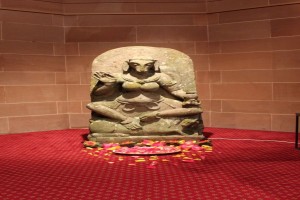
New Delhi: The auspicious occasion of Makar Sankranti marked the recovery and reparation of a stolen stone idol that belonged to the 10th Century era to the Archeological Survey of India (ASI) by the Indian High Commission in London.
The said idol was that of a goat head yogini from a temple in Lokhari, a small village in India’s northern heartland of Uttar Pradesh. The village lies in UP’s Banda district.
Lokhari has been home to Yoginis, who happen to be a group of powerful divinities for long. These yoginis are linked with Tantrik mode of worship. The Yoginis like in the case of pantheons are worshiped in a group and are said to possess infinite powers.
These had been the subject of a study by Indian scholar Vidya Dahejia on behalf of National Museum in New Delhi in 1986 which was later published under the title, “Yogini Cult and Temples: A Tantrik Tradition.”
Tracing the recovery path, the stone sculpture had first surfaced in London’s art market way back in 1988. It was however, as late as October 2021 when the Indian High Commission was informed about the spotting of a goat-headed yogini, matching the description of the idol stolen from Lokhari.
The Art Recovery International, London in tandem with India Pride Project Singapore ably assisted the Indian High Commission in facilitating the recent reparation.
Interestingly, a similar sculpture of the buffalo-headed Vrishanana Yogini, apparently stolen from the same temple at Lokhari village had been recovered and repatriated by Embassy of India, Paris in 2013. Thee Vrishanana Yogini was installed in the National Museum, New Delhi in September 2013.
-global bihari bureau





